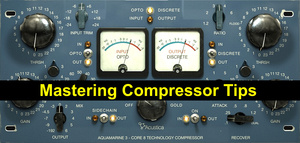- in Engineering , Production by Bobby Owsinski
Improve Your Mixes With These Mastering Compressor Tips
 With powerful mastering tools now available to everyone, it’s easy to do more harm than good when self-mastering. Although you’re always better off going to a true mastering engineer, sometimes that’s just not in the budget. Here are a few mastering compressor tips that can also apply to mixing from the 4th edition of my Mastering Engineer’s Handbook
With powerful mastering tools now available to everyone, it’s easy to do more harm than good when self-mastering. Although you’re always better off going to a true mastering engineer, sometimes that’s just not in the budget. Here are a few mastering compressor tips that can also apply to mixing from the 4th edition of my Mastering Engineer’s Handbook that I don’t think you’ll find anywhere else.
Adjusting the Attack and Release controls on the compressor and/or limiter can have a surprising effect on the program sound. It’s a secret weapon of mastering engineers but often overlooked musicians and engineers attempting to do their own mastering. If you choose to do your own mastering, always keep the following in mind when you’re setting up your mastering compressor:
- Slower Release settings will usually make the gain changes less audible but will also lower the perceived volume.
- A slow Attack setting will tend to ignore drums and other fast signals but will still react to the vocals and bass.
- A slow Attack setting might also allow a transient to overload the next plug-in or piece of equipment in the chain with an uneven mix.
- Gain changes on the compressor caused by the drum hits can pull down the level of the vocals and bass and cause overall volume changes in the program.
- Usually only the fastest Attack and Release settings can make the sound “pump.” Pumping can be desirable under certain circumstances for a mixer, especially when set to the tempo of the track, but it’s an unwanted artifact during mastering.
- The more bouncy the level meter, the more likely that the compression will be audible.
- Quiet passages that are too loud and noisy are usually a giveaway that you are seriously over-compressing.
It’s easy to make a mix sound worse instead of better when self-mastering, but that’s less likely to happen by observing the above items.
You can read more from the Mastering Engineer’s Handbook and my other books on the excerpt section of bobbyowsinski.com.
